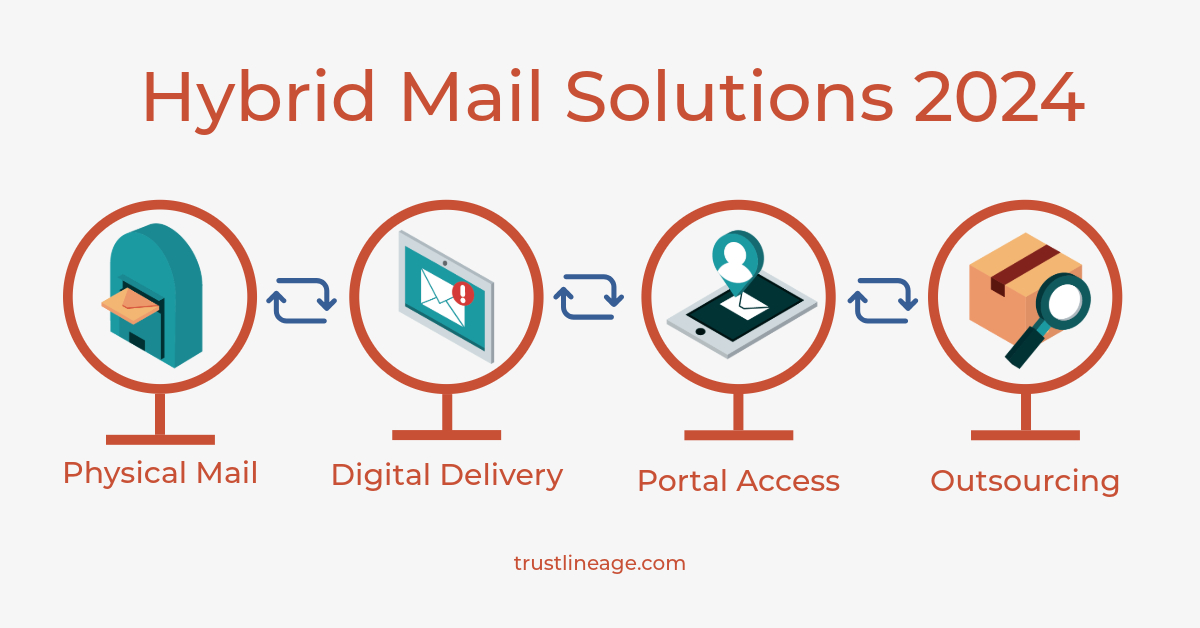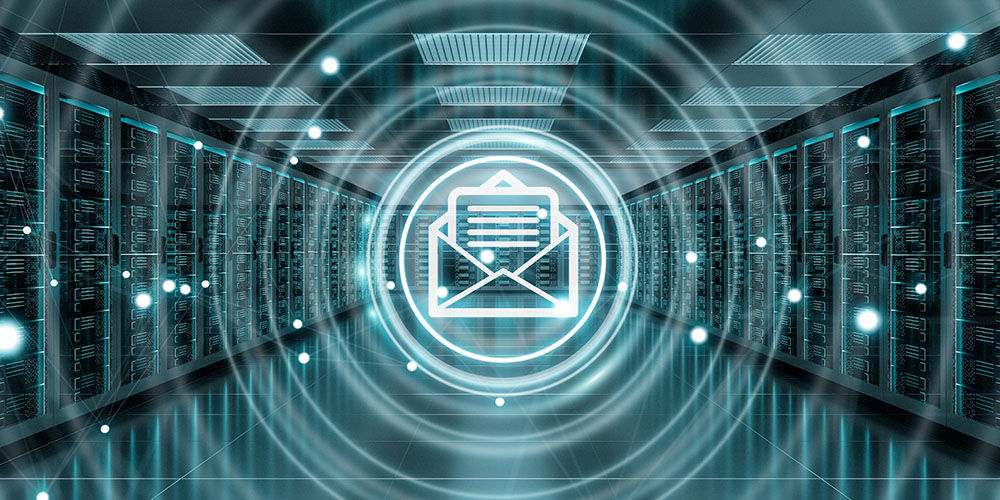Business Mail Industry Trends For 2024
Unfolding the Future of Business Mail and Customer Communication
Are you curious about what the future holds for the business mail industry and customer communication? Ever wonder how these changes will impact your business in 2024?
In this post, we’ll explore the evolving trends in business mail and customer service, diving into how digital transformation is reshaping the way we communicate with customers.
By the end, you’ll not only understand these critical shifts but also how you can leverage them to benefit your business.
What’s Changing in the Business Mail Industry for 2024?
The business mail industry is experiencing a significant shift towards digitalization, marked by a decline in traditional mail volumes and the rise of online postage solutions. These changes are prompting businesses to adapt their communication strategies to meet evolving customer expectations and leverage new technologies for efficiency and engagement.

The Current State of Business Mail
In today’s fast-paced world, business mail is undergoing a transformative phase, primarily driven by the shift toward digital communication.
While traditional mail once dominated the professional landscape, the increasing reliance on digital platforms is reshaping how businesses connect with their customers and manage their operations.
Market Dominant vs. Competitive Mail
Historically, the USPS has categorized mail into two segments: Market Dominant, which includes essential correspondence like letters and flats, and Competitive, or parcels, where businesses have the option to choose between USPS and other providers.
Despite the growing preference for digital communication, Market Dominant mail remains a significant component of business operations, handling a vast majority of professional correspondence.
However, as digital alternatives gain traction, businesses are observing a marked decline in traditional mail volumes, compelling them to reassess their mailing strategies.
Impact of Digitalization
The digitalization wave has notably impacted First Class Mail and Marketing Mail, leading to a steady decrease in their volumes.
This shift is largely attributed to the convenience and efficiency of digital platforms, which allow businesses to manage their business emails and professional email addresses with greater ease and security.
As more companies transition to digital invoices and statements, the relevance of traditional mail in certain business processes is diminishing.
While the trend towards digital and remote operations continues to grow, there’s a noticeable shift towards in-house document management for those seeking greater control over production and output.
This approach allows businesses to streamline workflows, reduce reliance on external providers, and cut operational costs.
In-house digitalization strategies enable organizations to tailor their document management systems to their specific needs, offering enhanced security, easy remote access, and the ability to scale operations efficiently.
The Rise of Online Postage Solutions
Amidst this digital shift, online postage solutions have emerged as a game-changer for small businesses and large enterprises alike.
Moving away from traditional postage meters, these modern platforms offer a more flexible and cost-effective way to manage business mail.
By enabling businesses to print postage on-demand, directly from their offices, or even remotely, online postage services simplify the mailing process, ensuring that companies can continue to deliver important documents to their clients, partners, and customers without the need for cumbersome equipment or trips to the post office.

Future Predictions and Strategies
As we look towards 2024, it’s evident that the trends observed in the business mail industry are not fleeting. Instead, they signal a lasting change in how businesses communicate and operate.
Adapting to these changes is not just about staying relevant; it’s about seizing opportunities to streamline operations and enhance customer engagement.
Predictions for Business Mail
The continued decline in traditional mail volumes is expected, with digital communication methods taking precedence.
However, this doesn’t spell the end of business mail.
Instead, it highlights a shift towards more strategic use of mailing services, where physical mail serves specific, targeted purposes, such as direct marketing campaigns or official notices, complementing digital strategies.
Economic challenges and a heightened awareness of environmental issues are influencing customer preferences. Businesses that align their mail strategies with these concerns emphasizing sustainability and economic value, are likely to resonate more with their audiences.
This alignment could manifest in eco-friendly direct mail campaigns or promotions for sustainable products and services, underscoring the strategic use of business mail to reflect brand values and customer priorities.
Trends in Customer Communication
Customer expectations are evolving.
Today’s customers expect seamless, omnichannel experiences that allow them to interact with businesses through their preferred channels, whether that’s email, phone, chat, or social media.
For businesses, this means adopting a customer communication management system that supports this omnichannel approach, ensuring that every customer service interaction is consistent, personalized, and reflective of the brand’s values.
Generative AI offers unprecedented opportunities for personalizing customer interactions at scale.
From crafting business emails that address the unique preferences of each customer to enhancing customer service interactions with AI-driven insights, businesses can leverage this technology to deepen customer engagement.
However, maintaining a balance between automated efficiency and the irreplaceable value of human empathy remains crucial.
Adapting to the Future
For businesses to thrive in the changing landscape of business mail and customer communication, flexibility and innovation are key.
Embracing digital solutions, from anything for managing professional email addresses to advanced customer service platforms that integrate AI and human support, will be crucial.
Additionally, businesses must remain vigilant, continually assessing their communication strategies to ensure they meet customer needs effectively and securely.
With the rapid adoption of AI in customer communication and service, businesses face growing concerns about data security and the ethical use of AI.
Addressing these concerns through transparent communication, stringent security measures, and responsible AI use will be critical for maintaining customer trust and ensuring the secure management of business emails and personal email information.

Embracing Hybrid Workforce Dynamics: The Shift to Hybrid Mail Solutions
As businesses adapt to the evolving landscape of the workforce, characterized by a mix of in-office and remote work, the necessity for innovative mailroom operations has become apparent. This shift has given rise to hybrid mail solutions, integrating physical and digital processes to accommodate unique business needs, workflows, and mailing operations.
Integrating Hardware and Software for Comprehensive Mailing Solutions
Hybrid mail solutions represent a blending of the tangible and the technological, where traditional mailroom tasks are supported by advanced software.
This approach reduces the need for a constant physical presence to manage mail operations, transitioning towards systems that employees can operate remotely.
By incorporating equipment like folder inserters and postage machines with digital mailroom automation software, businesses can ensure that their mail processes are seamless, efficient, and adaptable to both in-house and remote management styles.
The Financial and Operational Upside of Hybrid Mail Approaches
The move towards hybrid mail solutions is not just a response to the changing work environment; it’s a financially savvy strategy.
With a diminished necessity for staff to be onsite for mail preparation and handling, companies can significantly cut down on operational costs, including those related to physical space, equipment upkeep, and utilities.
This shift not only translates to direct financial savings but also reallocates human resources towards more strategic, revenue-generating activities, ultimately enhancing productivity and profitability.
The Growing Trend of Hybrid Mail Management
The trend towards hybrid mail management solutions reflects a broader organizational shift towards flexibility and efficiency.
This transition acknowledges the diverse needs of modern businesses, which require adaptable systems capable of supporting both traditional and digital mail processes.
As companies increasingly adopt these hybrid solutions, they lay the groundwork for a future where mailroom operations are more resilient, flexible, and aligned with the demands of a hybrid workforce.

Doing More with Less: Maximizing Operational Efficiency
In an era where operational agility is paramount, print, mail, document management, and communication providers are ingeniously finding ways to maximize their output while minimizing resources and overhead. This drive towards efficiency is not just a trend; it’s becoming the standard for sustainable business operations.
Leveraging Hybrid Solutions for Efficiency
Hybrid solutions are at the forefront of this transformation.
By slimming down on equipment and manpower, businesses are exploring how much they can achieve with the least possible operational footprint.
These solutions blend digital and physical processes, allowing for a significant reduction in resource use without compromising on output quality or quantity.
The shift towards such models demonstrates a strategic move to “do more with less,” leveraging technology to streamline operations and reduce costs.
Refining Workflows through Automation and Innovation
Workflow automation is a key strategy in the quest to enhance productivity and effectiveness.
The goal is to minimize manual, physical tasks and instead rely on intelligent equipment and software solutions that seamlessly work together.
This includes automating document and mail preparation processes to ensure security and maintain quality while significantly reducing the time and labor involved.

Streamlining Workflows with Advanced Automation
The push for more with less extends into the realm of workflow automation, where the focus is on creating efficient, secure, and quality-centric operational processes.
Automation in Document and Mail Preparation
By automating document and mail preparation workflows, businesses can significantly cut down on manual labor, focusing instead on software and machines that handle these tasks.
Intelligent equipment and digital solutions collaborate to ensure that every step of the process, from document creation to mail dispatch, is executed with precision and minimal human intervention.
This not only enhances efficiency but also supports sustainability by reducing the need for physical materials and energy consumption.

Enhancing Customer Communication Management for Strategic Engagement
Refining Customer Communication Management (CCM) is more than an operational adjustment—it’s a strategic business imperative. Today’s companies must adeptly navigate multiple communication channels, from email and social media to physical mail and online portals, ensuring each customer feels heard, valued, and engaged at every touchpoint.
Prioritizing Multichannel Communication Strategies
The key to modern CCM is not just in managing communication across different platforms but in strategically prioritizing these channels to stay connected with customers at all stages of their journey.
This approach allows businesses to offer customers multiple avenues for interaction, catering to their preferred methods of communication, whether it be digital, physical, or through online portals.
By doing so, companies ensure that customers can access the information they need precisely when they need it, fostering a sense of trust and reliability.
Integrating Technology With A Human Touch
The rise of CCM software highlights a significant trend toward streamlined, efficient customer communication management.
This technology enables businesses to effortlessly manage customer preferences, allowing for the seamless delivery of important information through physical mail or digital formats with just a click of a button.
However, the most successful CCM strategies blend this technological efficiency with the irreplaceable human touch.
AI and machine learning automate routine tasks, freeing up valuable time for personalized customer interactions that genuinely resonate and make customers feel valued.
The Role Of CCM In Building Customer Relationships
For businesses like Lineage, adopting a comprehensive CCM approach means acknowledging the importance of every communication preference.
From ensuring the security of business emails to facilitating easy access to online portals, a robust CCM strategy is indispensable.
It not only simplifies the management of various communication channels but also empowers customers to choose how they receive and interact with important information.
The Future of Customer Communication
As customer expectations continue to evolve, the strategic integration of CCM software into business processes will become increasingly crucial.
Companies that can adapt to these changes, offering personalized, efficient, and flexible communication options, will excel in building lasting customer relationships.
The future of CCM lies in its ability to harmonize technological advancements with a deep understanding of customer needs, crafting experiences that not only meet but exceed expectations at every turn.

Mastering Omnichannel Customer Service
Mastering omnichannel customer service is an evolving challenge that transcends the mere adoption of technologies. It’s about reimagining customer interactions to deliver a unified and personalized experience across all channels.
In an era where customer preferences vary widely – from traditional methods like direct mail to digital platforms – businesses are increasingly prioritizing omnichannel strategies to ensure consistency in service quality, irrespective of the communication medium.
Elevating Customer Service Through Omnichannel Communication
The essence of omnichannel communication lies in its ability to provide a seamless, integrated customer experience, whether the interaction occurs online, in person, or through a combination of channels.
This strategy requires a deep dive into understanding customer journeys, identifying key touchpoints, and ensuring that the transition between channels is fluid and intuitive.
By managing outbound communications with this holistic view, businesses can deliver personalized customer service that recognizes and respects individual preferences, building stronger, more loyal relationships.
Omnichannel Communication and Automation
Automation tools integrate various communication channels, from mobile and text notifications to mailed documents, ensuring consistent and timely delivery of important messages.
This comprehensive coverage is essential for maintaining customer satisfaction and engagement, illustrating how technology can bridge the gap between operational efficiency and customer service excellence.
The Role of Technology and Human Expertise
While AI-driven tools offer unmatched efficiencies in analyzing customer data and automating responses to routine inquiries, they are complemented by the empathy and understanding that only human interactions can provide.
Skilled employees, adept in navigating various communication platforms, are the backbone of any successful omnichannel strategy.
They ensure that the quality of customer service remains consistently high, regardless of the channel.
Furthermore, AI’s role in gleaning insights for personalization allows businesses to address customer needs with precision, fostering a sense of value and understanding that enhances the overall experience.

Bolstering Security in a Digital World
As businesses increasingly digitalize their operations, the need for robust security measures in both physical and digital communications has never been more critical.
Enhancing Security in Mailing Technology
Advancements in mailing technology, such as Intelligent Mail Indicia (IMI) in postage meters, provide enhanced security features that safeguard against fraud and unauthorized use. These technologies ensure that physical mail remains a secure and reliable communication channel, crucial for transmitting sensitive information.
Advancing Print Technology for Secure Communications
In the digital realm, print technology has evolved to include improved encryption and security protocols, protecting against data breaches and ensuring the confidentiality of printed documents. These advancements are part of a broader effort to secure all facets of business communications, acknowledging the increasing risks associated with digitalization and the paramount importance of protecting sensitive information.
Keep Your Business Ahead With Lineage
Lineage understands that in today’s fast-paced world, efficiency in communication isn’t just a goal—it’s a necessity. We offer tailor-made solutions that bridge the gap between traditional mailing needs and modern digital demands, ensuring your business stays ahead without getting lost in the shuffle.
Don’t let outdated processes hold you back. Fill out our contact form today or give us a call, and let Lineage help you chart a course through the complexities of contemporary communication.
